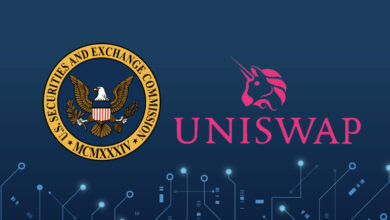CBDC Token vs. Account

In the realm of digital currencies, Central Bank Digital Currencies (CBDCs) have emerged as a frontrunner, sparking discussions about the most effective implementation approaches. Two prominent models have come to the forefront: CBDC tokens and CBDC accounts. While both serve the purpose of digitizing national fiat currencies, they differ in their underlying technological infrastructure, privacy considerations, and potential impact on various aspects of the financial ecosystem. Let’s learn more about the differences and similarities between CBDC tokens and CBDC accounts.
CBDC tokens vs. Account.
Account-based CBDC
- Think of it like your bank account in digital form.
- The central bank keeps track of individual balances.
- Requires verifying your identity for transactions.
- Offers similar levels of privacy to traditional bank accounts (depending on the design).
Token-based CBDC
- Uses digital tokens, similar to cryptocurrency.
- You hold tokens that represent your CBDC balance.
- Validating the token itself verifies the transaction.
- Can be more anonymous than account-based CBDCs (depending on the design).
CBDC tokens vs. Account- Table of Differences
| Feature | CBDC Tokens | CBDC Accounts |
|---|---|---|
| Technological Infrastructure | Relies on DLT or blockchain for peer-to-peer transactions without intermediaries. Uses cryptography for security. | Resembles traditional bank accounts with centralized ledgers. Aligns with current financial infrastructure. |
| Privacy and Security | Offers pseudonymity with transactions on a public ledger. Uses cryptographic techniques for anonymity. | May involve identity verification and transaction monitoring by centralized authorities. |
| Monetary Policy Implications | Could enable direct transmission of monetary policy signals. Interest rates and money supply adjustments may have an immediate impact. | Allows central banks to maintain control over money creation and distribution. Facilitates smoother policy implementation. |
| Financial Inclusion | Accessible through digital wallets, lowering barriers to entry for underserved populations. | May face adoption hurdles despite the potential familiarity. Educational initiatives could aid inclusivity. |
| Cross-Border Payments | Could streamline cross-border payments on interoperable DLT platforms. Regulatory harmonization remains a challenge. | May leverage existing correspondent banking networks. Interoperability between CBDC systems enhances payment efficiency. |
| User Experience and Adoption | May require a shift in user behavior. Intuitive interfaces and education campaigns could facilitate adoption. | Aligns with users’ familiarity with traditional banking. Integration with financial apps could drive adoption. |
| Interoperability and Standards | Global standards and protocols are essential for cross-border transactions and remittances. | Similar need for globally accepted standards and interoperability between CBDC systems. |
| Regulatory and Legal Considerations | Must comply with AML, KYC regulations, and ensure safeguards against illicit activities. | Requires appropriate safeguards, oversight mechanisms, and legal frameworks accommodating digital currencies. |
| Central Bank Strategies | Explored through research, and pilot projects. Some banks may opt for a hybrid approach. | Similar exploration and consideration of hybrid models combining elements of both tokens and accounts. |
| Case Studies and Pilot Projects | Examples include the Bahamas’ Sand Dollar and China’s DC/EP. Focus on adoption and regulatory compliance challenges. | Sweden’s e-krona and Uruguay’s e-Peso highlight user education and system integration needs. |
Detailed Differences
1. Technological Infrastructure
- CBDC tokens, akin to digital banknotes, rely on distributed ledger technology (DLT) or blockchain to facilitate peer-to-peer transactions without intermediaries.
- Scalability and interoperability with existing systems pose challenges.
- Security measures like cryptography ensure token integrity and prevent counterfeiting.
- CBDC accounts, on the other hand, resemble traditional bank accounts maintained by central banks or authorized institutions.
- Centralized ledgers record transactions, aligning with current financial infrastructure.
- Compatibility with existing systems may be more straightforward, but scalability remains a concern.
2. Privacy and Security
- CBDC tokens offer pseudonymity, with transactions recorded on a public ledger, potentially enhancing privacy.
- Advanced cryptographic techniques can further bolster anonymity.
- Robust security protocols are crucial to mitigate risks like cyber attacks and fraudulent activities.
- CBDC accounts, like traditional bank accounts, may involve identity verification and transaction monitoring.
- Centralized authorities have oversight, raising privacy concerns.
- Stringent security measures safeguard against data breaches and unauthorized access.
3. Monetary Policy Implications
- CBDC tokens could enable the direct transmission of monetary policy signals to individuals and businesses.
- Interest rates and money supply adjustments may have a more immediate impact.
- CBDC accounts allow central banks to maintain control over money creation and distribution.
- Integration with existing financial systems may facilitate smoother policy implementation.
4. Financial Inclusion
- CBDC tokens, accessible through digital wallets, could promote financial inclusion by lowering barriers to entry.
- Underserved populations with limited access to traditional banking services may benefit.
- CBDC accounts, while potentially more familiar, may still face adoption hurdles in certain communities.
- Educational initiatives and user-friendly interfaces could aid in promoting inclusivity.
5. Cross-Border Payments
- CBDC tokens, built on interoperable DLT platforms, could streamline cross-border payments and remittances.
- Regulatory harmonization and common standards remain crucial challenges.
- CBDC accounts may leverage existing correspondent banking networks for international transactions.
- Interoperability between different CBDC systems could enhance cross-border payment efficiency.
6. User Experience and Adoption
- CBDC tokens may require a shift in user behavior and understanding of digital wallets and cryptocurrencies.
- Intuitive interfaces and educational campaigns could facilitate adoption.
- CBDC accounts may align more closely with users’ familiarity with traditional banking experiences.
- Seamless integration with existing financial apps and services could drive adoption.
7. Interoperability and Standards
- Globally accepted standards and protocols are essential for both CBDC tokens and accounts.
- Interoperability between different CBDC systems is crucial for cross-border transactions and remittances.
- International organizations like the Bank for International Settlements (BIS) play a pivotal role in fostering collaboration and developing common frameworks.
8. Regulatory and Legal Considerations
- CBDC tokens and accounts must comply with anti-money laundering (AML) and know-your-customer (KYC) regulations.
- Appropriate safeguards and oversight mechanisms are necessary to prevent illicit activities.
- Legal frameworks must evolve to accommodate the unique characteristics of digital currencies.
- Consumer protection, data privacy, and taxation are key areas requiring regulatory clarity.
9. Central Bank Strategies
- Central banks worldwide are exploring CBDC tokens and accounts through research, pilot projects, and real-world implementations.
- Technological capabilities, policy objectives, and stakeholder consultations shape their strategies.
- Some central banks may opt for a hybrid approach, combining elements of tokens and accounts.
10. Case Studies and Pilot Projects
- The Bahamas’ Sand Dollar and China’s Digital Currency Electronic Payment (DC/EP) are pioneering CBDC token initiatives.
- Lessons learned include challenges related to adoption, interoperability, and regulatory compliance.
- Sweden’s e-krona and Uruguay’s e-Peso pilot projects focus on CBDC accounts, highlighting the need for user education and integration with existing systems.
Conclusion
As the digital currency landscape continues to evolve, central banks face the critical decision of whether to pursue CBDC tokens or accounts, each with its own set of advantages and challenges. Ultimately, the chosen approach will shape the future of money, impacting various stakeholders and shaping the trajectory of financial innovation.
Frequently Asked Questions
- Is a bank account required for CBDC?CBDC can be distributed via bank payment system providers (PSPs). 5. Because a bank account is not needed, a larger portion of the public will use and benefit from CBDC under this arrangement.
- Will CBDC take UPI’s place? No, CBDCs will not replace UPI; rather, they will enhance its functionality. CBDCs will function as virtual currency for retail payment platforms such as UPI.
- Where do CBDC coins get sold? On decentralized exchanges, tokens for CBDC can be exchanged. The most often used platform for buying and selling CBDC is Uniswap V2 (Ethereum), where the most traded pair is CBDC/WETH, with $64.94 worth of trades in the past day.





